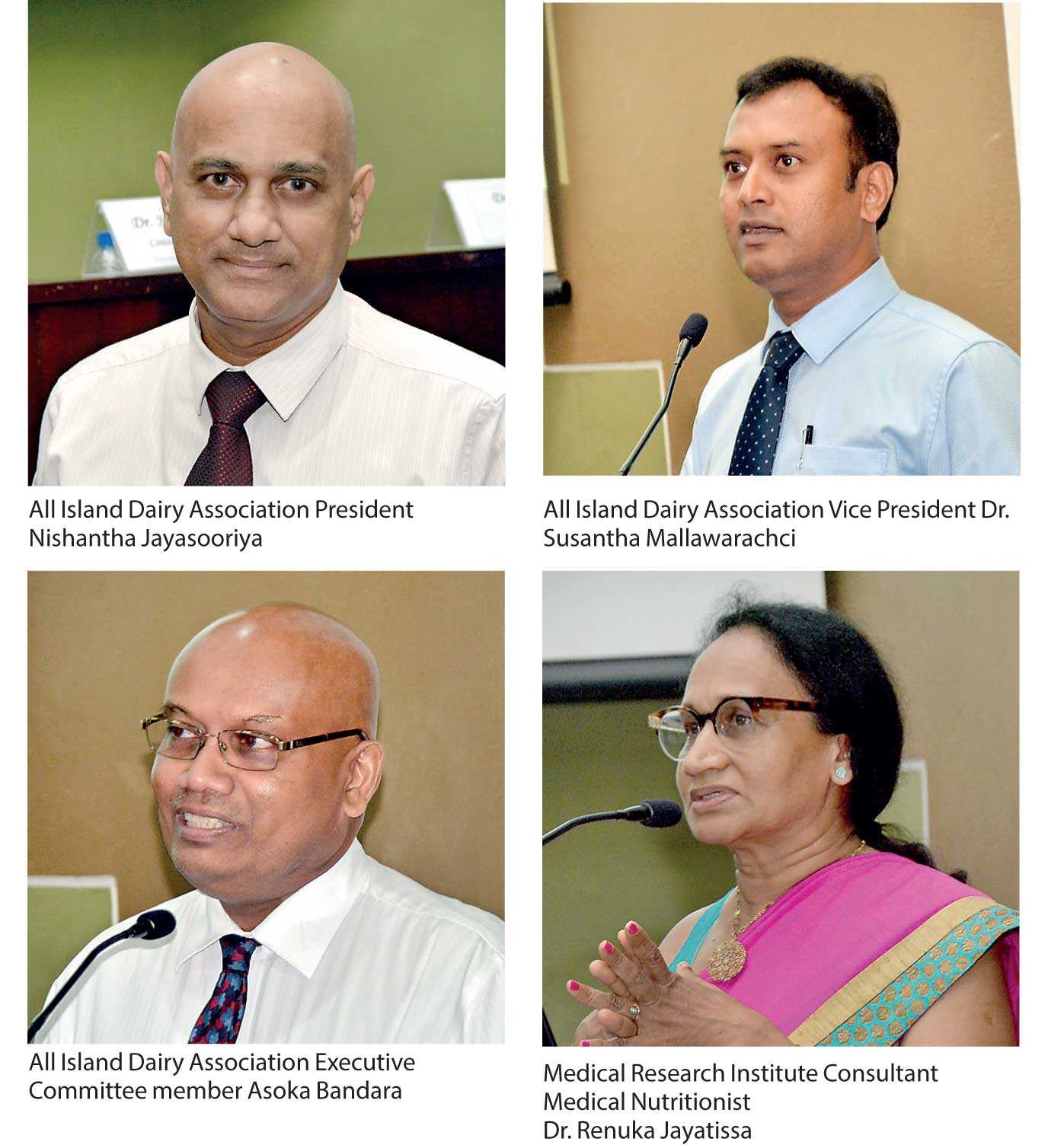Monday Apr 21, 2025
Monday Apr 21, 2025
Wednesday, 6 June 2018 00:00 - - {{hitsCtrl.values.hits}}

The All Island Dairy Association (AIDA) recently organised a seminar on ‘Challenges in Meeting Emerging Trends in the Dairy Industry’ recently at the Ceylon Chamber of Commerce. AIDA representing a wide range of dairy industry stakeholders such as milk producers, processors, importers, and service and input providers organised this seminar with the main objective of discussing emerging trends in dairy industry, educating businesses in the dairy industry on new regulations pertaining to dairy products and agreeing on a way forward to face these challenges.
The discussion covered key topics such as the main issues facing the sector, current barriers to meeting the local industry’s potential, and how the government and industry needs to collaborate to overcome these barriers.
All Island Dairy Association (AIDA) President Nishantha Jayasooriya, making opening remarks stated that 75% of milk comes from smallholder farmers. “We see a lot of enthusiasm among farmers to increase local milk production as fresh milk is profitable for dairy farms.”
He identified a gap in the quality of milk due to the lack of access to the right equipment, knowledge on proper dairy practices, and proper chilling facilities which is harmful especially when maintaining a consistent standard of quality. “Because of this, a lot of the yield is rejected and wasted,” said Jayasooriya.
All Island Dairy Association Executive Committee member Asoka Bandara speaking on ‘Current Milk Regulations and Dairy Industry’, highlighted that the local dairy sector has increased its supply from 196 million litres in 2010 to 327 million litres in 2017, yet still meets only 40% of Sri Lanka’s growing dairy consumption, revealing a clear gap in supply and demand.
Bandara said, “Fresh milk may be profitable for farmers, who may earn up to Rs. 30-35 per litre as per our calculations, however processors are squeezed between ever increasing costs throughout the entire value chain and a fixed milk price for milk products especially for milk powder.” He highlighted the incongruity of price-controlled milk powder undergoing a 15% VAT inclusion in 2016, whilst global milk prices, inflation and rupee devaluation continued to increase cost to the industry.
He noted that the industry had requested the Government to collaborate on a solution by replacing the restrictive price control with a transparent and predictable price formula to determine milk powder prices. He urged the government to collaborate with the industry and consider other avenues to drive the industry forward in a sustainable manner.
AIDA Vice President Dr. Susantha Mallawarachchi explained that most of the issues faced by local dairy farmers are due to poor practices and a negative attitude towards dairy farming. He pointed out that certain farm management issues such as lack of cow comfort, tethering and improper levels of feed and water are reasons for productivity and quality gaps. He highlighted the need to improve the quality of local milk, stressing the opportunity of working with smallholder farmers to transform them into prosperous entrepreneurs through introducing modern dairy farm practices.
“The dairy sector adds only about 1.2% to Sri Lanka’s GDP. This is because dairy farming is now commonly considered as a second income earner. We need to change our attitude towards dairy farmers; they are not only farmers, they are entrepreneurs,” Dr. Mallawaarachchi said.
In addition to the challenges of the local dairy industry, the seminar also focused on the importance of dairy nutrition as part of a balanced diet.
Addressing the topic of ‘Milk, Energy and Malnutrition’, Medical Research Institute Consultant Medical Nutritionist Dr. Renuka Jayatissa shared a nutrition analysis that indicated the nutrition quality of both fresh milk and powdered milk and recommended the consumption of dairy in other formats as well to meet the daily nutritional requirements.
“All forms of dairy are nutritious in recommended quantities i.e. 200ml of milk, 150g or 1 pot of yoghurt or 30g of cheese. Therefore, our focus should also extend to producing more dairy formats like yoghurt and cheese, not just milk,” she said.
The discourse on the nutrition in dairy also addressed the need for dairy products with little or no added sugar, another key focus for the industry currently. The industry’s commitment to continuously reducing sugar levels in products was reiterated, albeit through a gradual process considering consumers’ needs and taste palettes.
The seminar was followed up by a panel discussion moderated by AIDA Executive Committee Member Dr. Nelum Withana. The ensuing panel discussion was the first of its kind held by the AIDA, and featured perspectives from the speakers i.e. Asoka Bandara, Dr. Susantha Mallawa Arachchi, Dr. Renuka Jayatissa, Consultant Medical Nutritionist, Medical Research Institute and invited expert panellists; Dr. Chaturanga Ranasinghe, Specialist in sports and exercise medicine; Dr. Ilmy Hewajulige, Senior Deputy Director/Food Technology Section, Industrial Technology Institute and members of the All Island Dairy Association as well as other industry representatives.